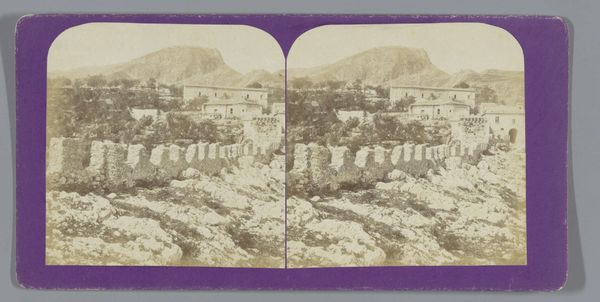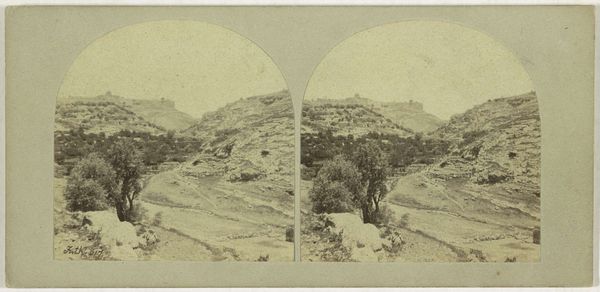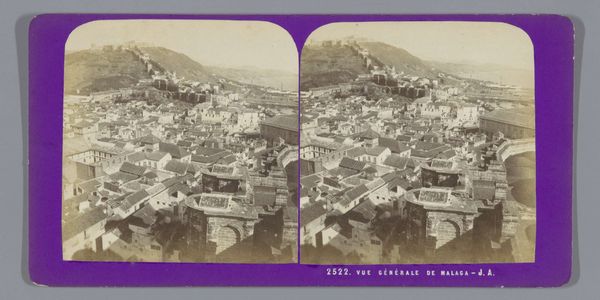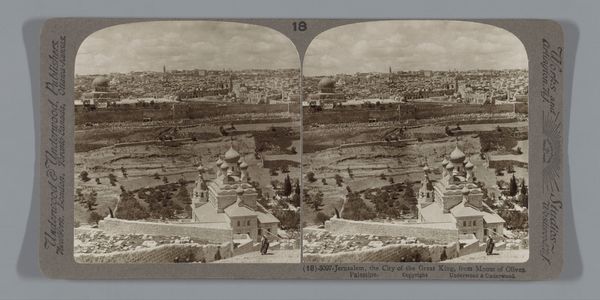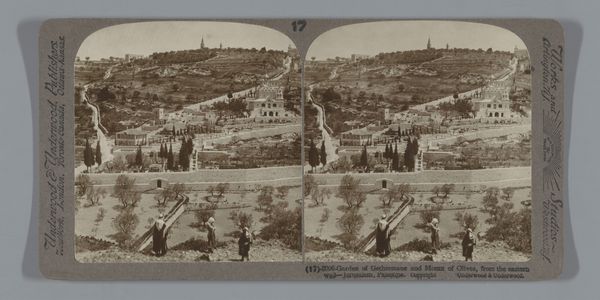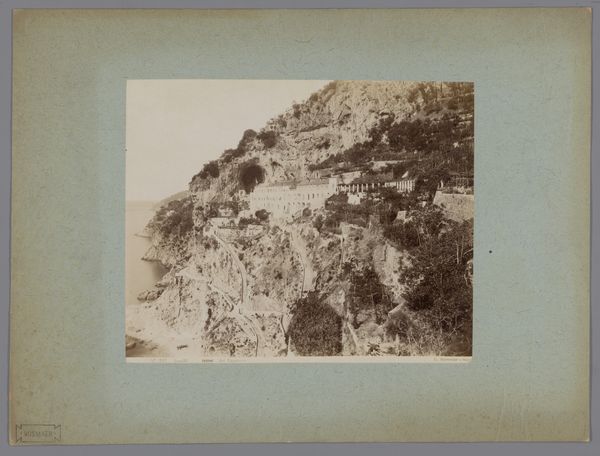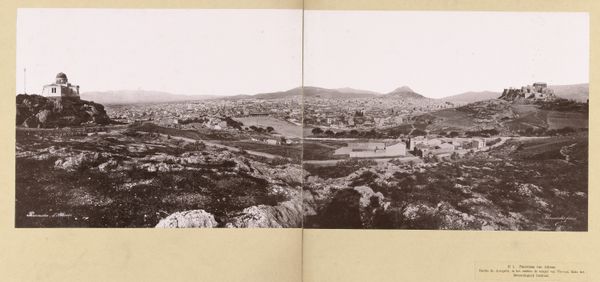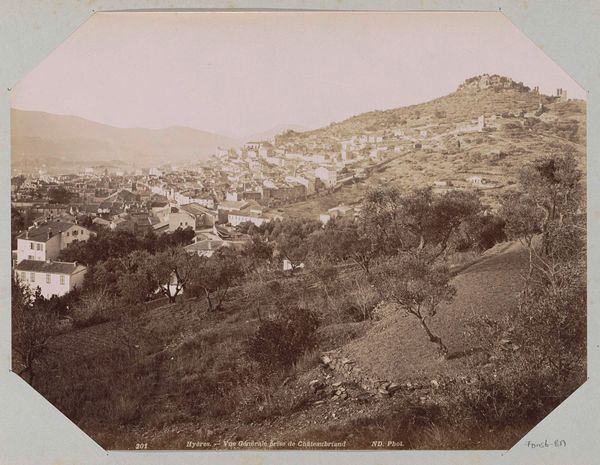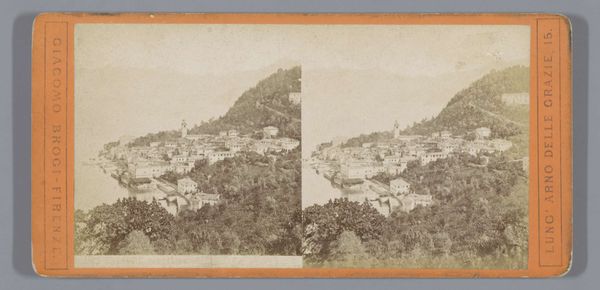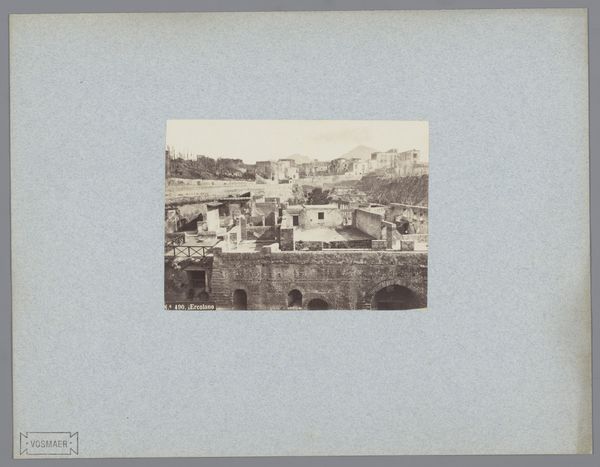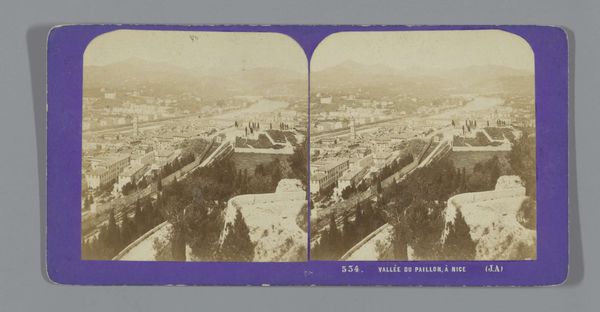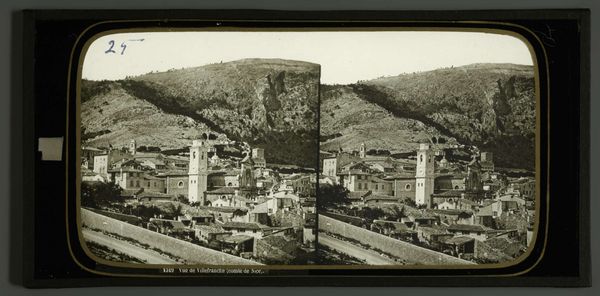
print, photography
#
pictorialism
# print
#
landscape
#
street-photography
#
photography
Dimensions: height 87 mm, width 177 mm
Copyright: Rijks Museum: Open Domain
Editor: Here we have an anonymous photograph from between 1900 and 1906, titled "Gezicht op het Kidrondal en het dorp Siloam, nabij Jeruzalem" – "View of the Kidron Valley and the village of Siloam, near Jerusalem." It’s a print, and what strikes me is how the composition really leads your eye from the foreground up through the valley to the town perched on the hill. What do you see in this piece? Curator: The formal elements orchestrate a complex interplay between light and shadow, revealing the image's underlying structure. Note the contrasting textures, from the rough terrain of the valley to the ordered construction of the village. This creates a dynamic visual rhythm, guiding the viewer's gaze and activating the pictorial space. What structural principles do you believe govern the distribution of these contrasting elements? Editor: I think the way the photographer used the curves of the valley to frame the village, and the contrasting dark foreground to draw the eye, create an S-curve. Curator: Precisely. This S-curve acts as a compositional spine. Furthermore, consider the tonal range: the gradations of light, almost monochromatic. What effect does this limited palette achieve? Editor: I guess it helps create depth, separating the planes and unifying the details? Curator: Indeed. Observe how the lack of vibrant color emphasizes form and texture, pushing this image away from mimetic representation and towards an engagement with abstract formal relationships. What kind of art movements developed these qualities? Editor: Pictorialism is really noticeable here, where photography became fine art through soft focus and manipulation to heighten its artistic effect. I'm starting to look beyond the representational aspect and see the intentional use of pictorial devices for composition. Curator: Precisely! Now, we've begun to see the photographic materials not only depicting a scene but as integral to its artistic effect. What’s most interesting to you after this process? Editor: Realizing that the structures present impact and affect, and how my reading has moved beyond thinking of just 'what's there' into an exploration of how the artistic approach shapes experience.
Comments
No comments
Be the first to comment and join the conversation on the ultimate creative platform.
